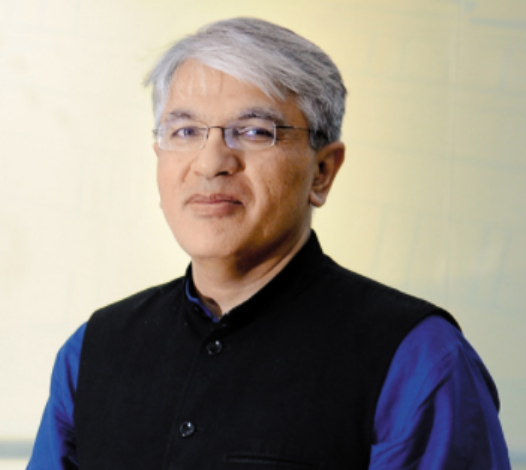Putting India to work

One of the most frustrating classifications of the last decade for India has been BRICS. We have little in common with commodity economies like Brazil, Russia, Indonesia and South Africa, which are commodity driven economies, with little economic complexity. India is economically complex; we make everything and do everything (not always well or at scale). The China question is even more pervasive; on our IPO roadshow earlier this year, an investor asked “Exactly 10 years ago, the Chinese economy was of the same size as India today; yet, they were growing at 13 per cent and you are growing at 7 per cent. How do you explain that?” My response was: the 6 per cent shortfall goes towards the fixed costs of democracy.
But there is more to thinking about our jobs and education situation in 2050 than democracy; we don’t have the same global growth, global trade or manufacturing opportunity that China had in 1978. The developed world faces secular stagnation, while the political backlash against free trade has just begun and manufacturing is much more labour-intensive than it was.
Predictions are always dangerous and difficult but we can say something for sure about 2050; Many more Indians will work in cities, with more than a million people (today, we only have 45 of these vs 385 in China. The gap between the college wage premium and skill wage premium will vanish, if not disappear. And 12 years of schooling with be mandatory, because the most important vocational skills are reading, writing, and arithmetic. The social signalling value of college will decline (already 31 per cent of retail salespeople in the US, 60 per cent of taxi drivers in Korea and 15 per cent of high-end security guards have a college degree).
Various forms of learning-by-doing and learning-while-earning like apprenticeships will substantially increase as a vehicle for accumulating skills (today India only has 300,000 apprentices, while Germany has 3 million, Japan 10 million and China 20 million). Employment will have changed from being a lifetime contract to a taxicab relationship, because employers will not be permanent institutions (the average life expectancy of a Fortune 500 company in the first list published in 1935 was 65; in the list published last month it was 15). Benefits will not be linked to employers but will be fully portable and linked to your Aadhar number (today 50 million of the goofy Provident Fund’s 100 million accounts are inactive accounts, with worker money orphaned or trapped).
Companies will have a single number for every operation (today companies have 27 different numbers issued under various Acts and by various regulators). Most employers in India will be formal (today, of the 60 million enterprises in India, only 8.5 million have a tax registration, only 1.5 million pay Provident Fund or £31 and only 1 million are companies). Less than 10 per cent of our labour force will be employed in agriculture (today, 50 per cent of our labour force on farms generates only 15 per cent of GDP).
About 20 per cent of our labour force will work in manufacturing (today only 11 per cent does and that is the same as post-industrial USA. We will never reach the peak levels of 40 per cent, 33 per cent and 27 per cent reached by the UK, China and the US respectively). The working poor will disappear (today, 40 per cent of our labour force makes enough money to live but not enough money to pull out of poverty). It is still early to say but, unlike the only comparable nation of size and poverty, China, where jobs came from manufacturing, exports and large companies, India will probably see the largest job creation in services, domestic con sumption and medium and small companies.
When I landed for my MBA in the US in 1994, there was a front page article in The Wall Street Journal, which said that “India was more interesting than important”. I hope that journalist is eating the newspaper on which she wrote that; what is happening in India is not ‘once in a decade’ or ‘once in a millennium’ event. Poverty is about productivity and, by 2050, we will have transformed our enterprises and individuals to put poverty in the museum it belongs to. We are not on the right track, but this is not a given; we must stay the course in fixing the sins of omission (what the government does not do), as much as the sins of commission (what the government does wrong). But I am optimistic because we finally have an economy, society and government that recognises a job changes a life in ways that no subsidy ever can.
Latest Blogs
Manufacturing Industry Growth in India and Hiring Trends
Hiring for Manufacturing Industry in India India's manufacturing sector is on the cusp of a transformative leap, aiming to bolster its GDP contribution to 25%...
Read MoreNavigating Growth and Challenges in the Indian FMCG Sector in India
Technological Advancements and Digital Transformation: Technology is playing a pivotal role in shaping the future of the FMCG brands in India. From digital marketing and...
Read MoreWorking With a Multigenerational Workforce: Benefits and Challenges
Benefits of a multigenerational workforce Each workforce from a different generation has a unique perspective shaped by their experiences, upbringing, and cultural influences; they bring...
Read MoreGrowth of Hospitality Industry in India 2023 and Prospects for 2024
Surging Opportunities and Hiring Trends in 2024 Fueled by a surge in travel, India experienced a remarkable 50% increase in hiring for tourism and hospitality...
Read MoreTelecom Industry in India: The evolving landscape
Inventory in the Telecom Sector: In the telecom sector, inventory encompasses a range of tangible and intangible assets crucial for operations. This includes physical infrastructure...
Read More





